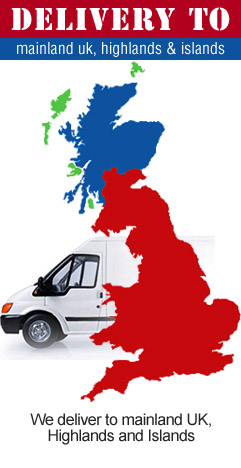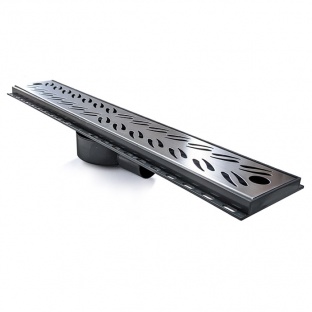| ||||||||||||||
Eco-Friendly Drainage Solutions: Sustainable Practices for Your Property5 February 2024 | Admin
Eco-friendly drainage, also known as sustainable drainage channel systems (SuDS), refers to a collection of water management practices that aim to align modern drainage needs with environmental stewardship. The core principle behind eco-friendly drainage is simple yet profound: mimic nature's way of dealing with water. This approach involves absorbing, collecting, and using runoff water in a way that reduces its negative impact on the environment. Unlike traditional systems that focus on rapid water removal from properties, eco-friendly drainage emphasises water's natural cycle, aiming to slow down and reduce runoff, filter pollutants, and enhance the aesthetic and ecological value of the landscape. Comparison with Traditional Drainage MethodsTraditional drainage methods have been predominantly about efficiency - moving water away from built-up areas as quickly as possible. This approach, however, overlooks several critical environmental aspects. For instance, it often leads to the rapid movement of pollutants into water bodies, contributing to water quality degradation. Furthermore, these systems do not replenish groundwater levels, leading to lowered water tables and dried out landscapes that also mean no water in the underground drainage within these areas. In contrast, eco-friendly drainage solutions focus on sustainability and environmental harmony. They incorporate techniques like permeable pavements, rain gardens, and green roofs, which not only manage stormwater effectively but also contribute to biodiversity, improve air and water quality, and enhance the urban landscape. As we continue to face environmental challenges, the shift towards eco-friendly drainage solutions becomes not just a preference but a necessity. Through this comparison, it becomes clear that sustainable drainage practices offer a holistic and future-oriented approach to managing water runoff. Benefits Of Sustainable Drainage SystemsSustainable Drainage Systems (SuDS) offer numerous environmental benefits that are crucial in today's context of climate change and ecological degradation. Firstly, they significantly reduce surface water runoff, minimising the risk of flooding, which is a growing concern in many urban areas. SuDS also play a vital role in improving water quality. By naturally filtering runoff, they remove pollutants, thus preventing them from entering and contaminating water bodies. Additionally, these systems aid in replenishing groundwater levels, ensuring a more sustainable water cycle. The incorporation of vegetation and natural elements in SuDS also enhances biodiversity, creating habitats for various wildlife species. From an economic standpoint, SuDS are cost-effective in the long run. They reduce the burden on municipal stormwater management systems, potentially lowering the costs related to water treatment and flood damage repairs. Properties equipped with SuDS can also see an increase in their value due to improved aesthetics and functionality. Moreover, the reduced risk of flooding and waterlogging can lead to lower insurance premiums for property owners. These products are the most vital parts of plastic channel drainage and are so easy to purchase from the Drainage Channel site. SuDS contribute significantly to social well-being and community development. They create aesthetically pleasing environments that promote public health and well-being. Green spaces, like those incorporated in SuDS, are known to reduce stress and encourage physical activity. Additionally, SuDS can be used as educational tools, teaching communities about sustainable living and water conservation. They also foster community involvement and ownership, especially when local residents are engaged in the planning and maintenance of these systems. Key Components of Eco-Friendly DrainageRain gardens are a pivotal component of eco-friendly drainage. They are shallow, vegetated basins that collect and absorb runoff from rooftops, driveways, and other impervious surfaces. Their role extends beyond water management; they provide critical microhabitats for local flora and fauna. By using native plants, rain gardens also promote biodiversity and can be an attractive feature in both residential and public landscapes, and can accompany things like polymer concrete channel drainage. Green roofs, which involve growing vegetation on rooftops, are increasingly popular in urban settings. They are effective in absorbing rainwater, reducing runoff, and providing insulation to buildings. This leads to energy savings, particularly in heating and cooling. Green roofs also combat the urban heat island effect by reducing surface temperatures. Additionally, they offer habitats for wildlife and contribute to urban greenery, enhancing the quality of life for city residents. Permeable pavements are surfaces designed to allow water to pass through them, reducing runoff and improving water quality. They are ideal for driveways, parking lots, and walkways. The benefits of permeable pavements include reduced surface water flooding, replenishment of groundwater reserves, and filtration of pollutants. They are an effective solution in urban areas where conventional green spaces are limited. Professional Eco-Friendly Drainage ServicesProfessional assistance is crucial for eco-friendly drainage solutions in certain scenarios. For large-scale projects that span extensive properties or have complex landscapes, professional expertise ensures comprehensive design and implementation. Technical challenges, such as meeting local regulations or unique environmental conditions, also necessitate expert guidance. Maintaining and updating existing systems for effectiveness often requires professional skills. Additionally, retrofitting sustainable solutions into established structures involves careful planning and assessment, best handled by professionals. Selecting the right service provider involves several considerations. The provider should have a solid track record and expertise in eco-friendly drainage. Essential qualifications and certifications in sustainable and environmental practices are a must. Knowledge of local climate, soil types, and regulations ensures tailored and effective solutions. Reviewing customer feedback and obtaining references help gauge reliability and quality. A genuine commitment to sustainability, beyond just drainage solutions, reflects the provider's overall approach to environmental responsibility. Challenges And ConsiderationsImplementing sustainable drainage systems comes with its own set of challenges. In urban areas, finding enough space for features like rain gardens or green roofs can be a significant hurdle. The initial setup costs of these systems are often higher than traditional methods, which can deter some property owners. Navigating local regulations and building codes requires in-depth knowledge and can be complex. Additionally, certain soil types or terrains may not be conducive to all types of eco-friendly drainage solutions. Overcoming challenges in implementing eco-friendly drainage involves several strategic approaches. Educating stakeholders about the long-term benefits and the importance of these systems is crucial for gaining support. Demonstrating the economic advantages, such as reduced maintenance and flood damage costs, can help justify the initial investment. Designing customised solutions that cater to the specific needs and constraints of a property can address issues related to space and terrain. Engaging in advocacy to influence local regulations and policies can also create a more favourable environment for the adoption of sustainable drainage practices. | ||||||||||||||




















